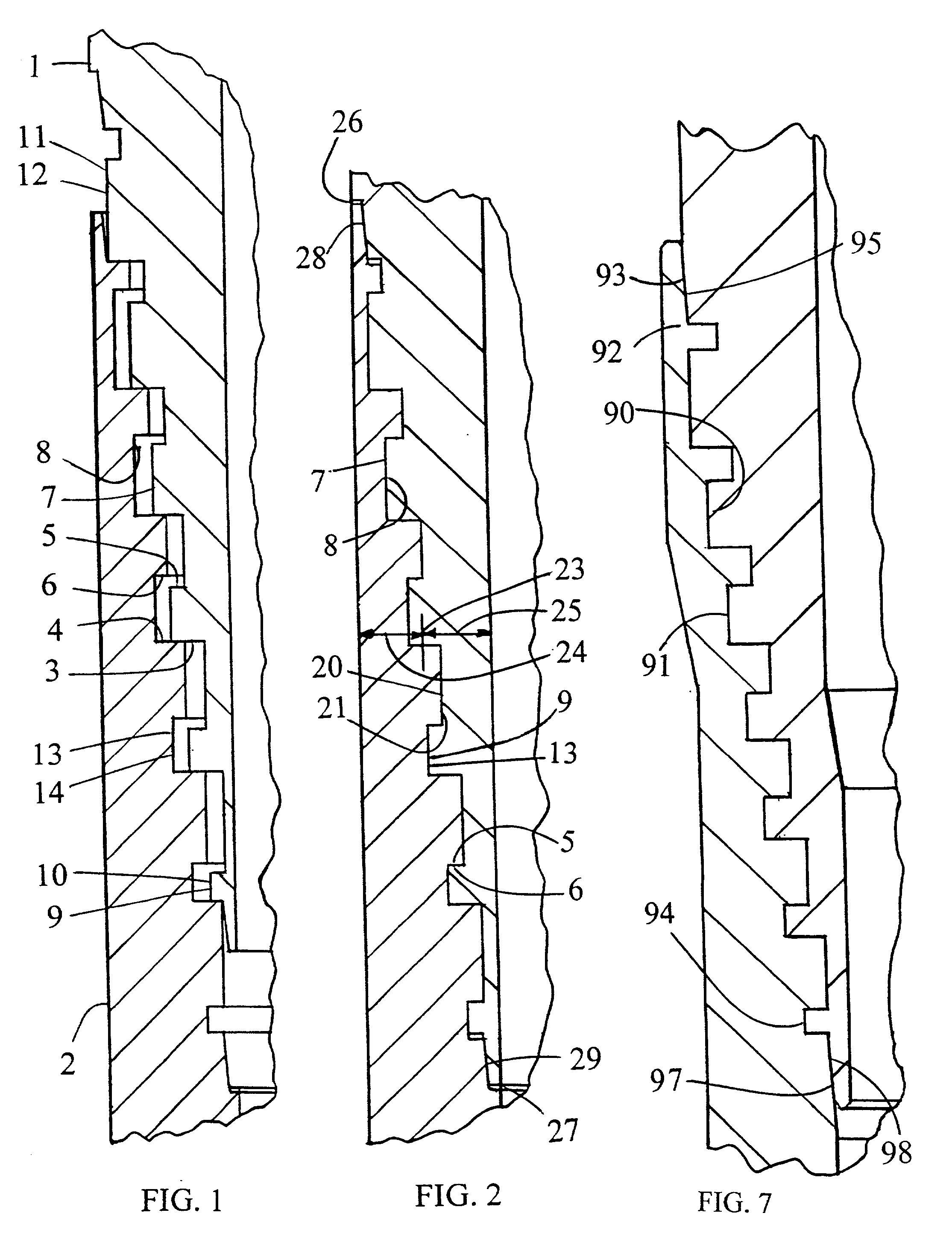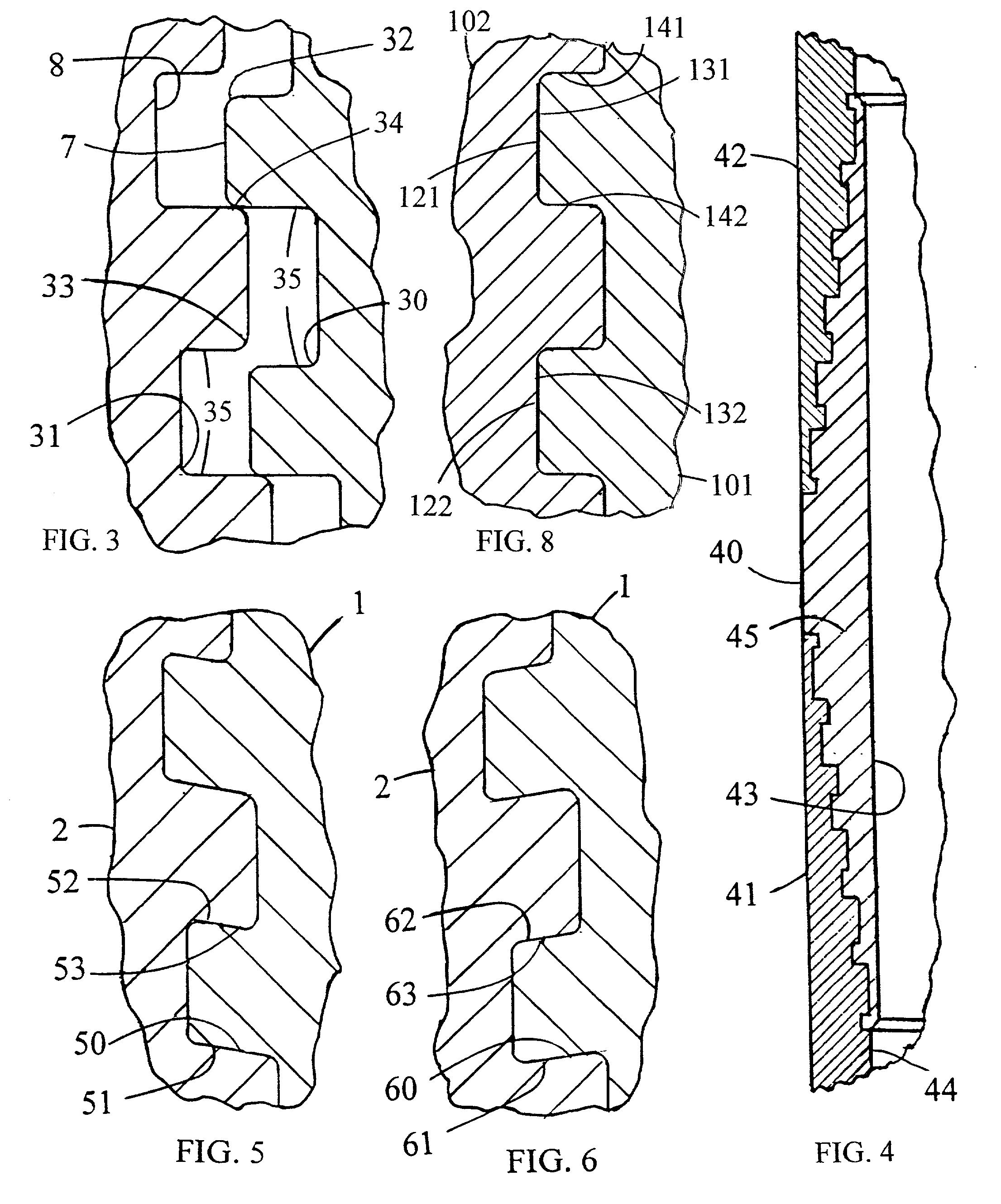Open type wedgethread connection
- Summary
- Abstract
- Description
- Claims
- Application Information
AI Technical Summary
Benefits of technology
Problems solved by technology
Method used
Image
Examples
Embodiment Construction
[0094] Multiple-start wedgethreads are within the scope of the present invention but for brevity, only a one-start thread is described. FIG. 1 depicts Pin 1 at stab position within Box 2 such that helically configured pin stab flank 3 and the weight of the pipe joint it is formed on, is supported by helically configured box stab flank 4. Pin load flank 5 and box load flank 6 are not then in contact with each other. Stab position is attained by lowering the pin into the box without rotation, wherein thread turns of the pin pass downwardly through thread turns of the box until the pin stab flank of each turn contacts a box stab flank turn too small in diameter for it to pass through, such that the pin stab flank rests on the box stab flank whereupon, pin crest 7 is in horizontal alignment within box root 8. Both root and crest are preferably formed parallel to the connection axis so as to prevent taper lockup during stabbing and also, to provide wider flanks. Axial length 9 and diamet...
PUM
 Login to View More
Login to View More Abstract
Description
Claims
Application Information
 Login to View More
Login to View More - R&D
- Intellectual Property
- Life Sciences
- Materials
- Tech Scout
- Unparalleled Data Quality
- Higher Quality Content
- 60% Fewer Hallucinations
Browse by: Latest US Patents, China's latest patents, Technical Efficacy Thesaurus, Application Domain, Technology Topic, Popular Technical Reports.
© 2025 PatSnap. All rights reserved.Legal|Privacy policy|Modern Slavery Act Transparency Statement|Sitemap|About US| Contact US: help@patsnap.com



